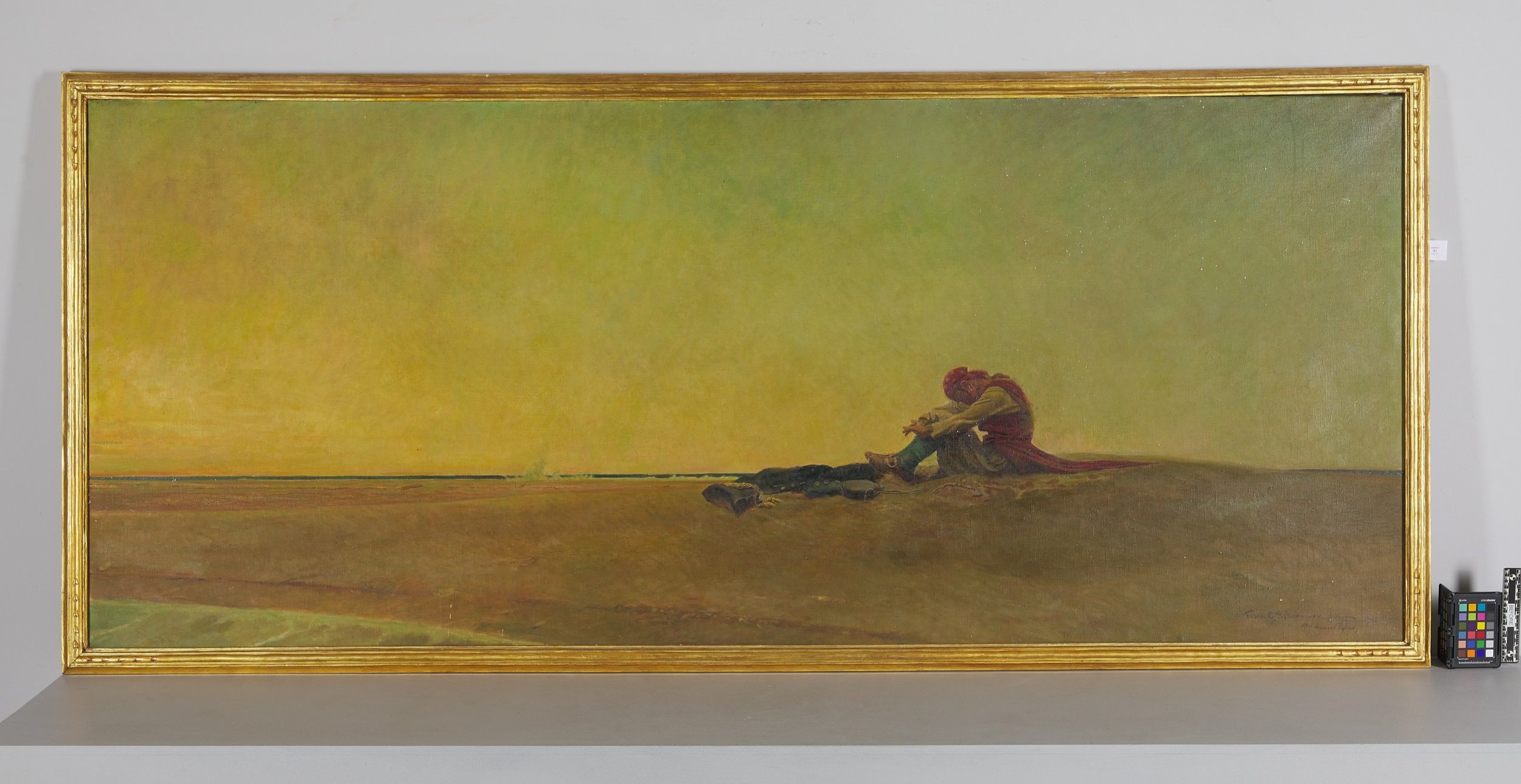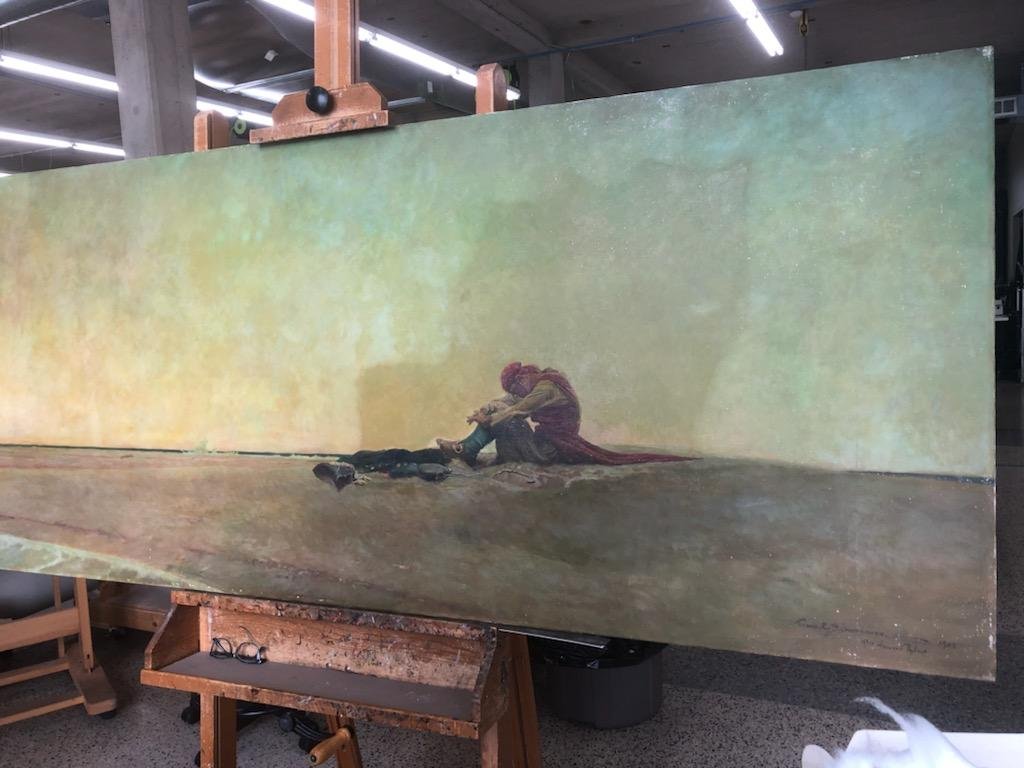The Brandywine School of Artists was a group of impressionist and post-impressionist painters who lived and worked in the Brandywine River Valley region, primarily in Delaware and Pennsylvania, from 1870 to 1920. The artists are best known for depicting people residing along the Brandywine River during the late 19th century.
Philadelphia artist Howard Pyle founded the group. He had been a successful illustrator for books and magazines, but he wanted to teach his students more about color, light, form, space, and composition. He started teaching at Drexel Institute in 1885 before founding the Howard Pyle School of Illustration Art. His artistic style influenced many artists, such as N.C. Wyeth, Thornton Oakley, and Frank Schoonover.
Before treatment
This emotive painting, "Marooned," is Frank Schoonover's copy of Pyle's original. Schoonover studied under Pyle at the Drexel Institute, later becoming part of the Brandywine School of artists, and worked to assist the Delaware Art Museum in acquiring artwork by Pyle.
The painting is signed "Frank E. Schoonover 1942 att. Howard Pyle" at the lower right.
During treatment, under UV light
When it arrived at The Center, Marooned was in generally stable condition. The canvas was on what appeared to be the original stretcher, although all of the keys were missing causing the canvas to be slack with corner draws at the upper left and right.
Before treatment, painting verso
There were numerous pinpoint losses to the paint layer along the right quarter of the painting and on the figure and a few pinpoint losses along the left edge. The painting also exhibited a layer of surface grime, with a dry accretion to the left of the center and areas of flyspecks along the left 1/4 of the image.
Before treatment; detail of figure with small losses
Senior Paintings Conservator Amber Schabdach performed the conservation treatment of this expressive painting. The missing keys were replaced first, allowing the canvas tension to be adjusted, reducing the slack and corner draws. The small areas of flaking paint were locally consolidated using conservation adhesives to ensure it would be stable during surface cleaning.
During treatment
Detail, during cleaning
The surface grime was then removed using appropriate aqueous solutions. Cleaning revealed a new vibrancy of the painted surface, highlighting the oil paints and enhancing the artist's original work. The small losses could then be filled and textured before an isolating varnish layer was applied to separate the artist's original paint from the inpainting Amber performed to integrate the small areas of loss. Last, a final coat of satin varnish was applied to integrate the surface.
During cleaning
During cleaning
Before treatment; detail of figure
After treatment; detail of figure
The owner of this painting shared, "I grew up in the Brandywine Valley and was exposed to Howard Pyle, N.C. Wyeth, and Frank Schoonover art. Illustrative art was founded in the area I grew up. Pyle's masterpiece, in my opinion, is "Marooned." After spending time with this expressive painting in our lab, we couldn't agree more and understand why Frank Schoonover chose to honor his teacher Howard Pyle by recreating this masterpiece.
After treatment
After treatment, painting verso












